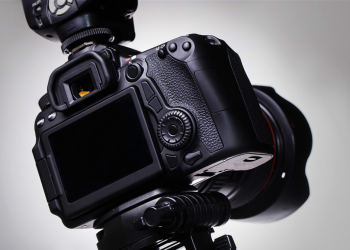Introduction
Portrait photography is a powerful medium for capturing the essence and personality of individuals. In this article, we’ll explore various tips and techniques to help you master the art of capturing striking portraits that leave a lasting impression.
Understanding Portrait Photography
Definition and Purpose: Portrait photography focuses on capturing the personality, mood, and character of the subject. Whether it’s a formal headshot or a candid moment, portraits convey a sense of identity and emotion.
Elements of a Great Portrait: A great portrait goes beyond mere likeness; it captures the essence of the subject, evokes emotion, and tells a story. Elements such as composition, lighting, and expression all contribute to the overall impact of a portrait.
Choosing the Right Equipment
Camera Selection: While you can take portraits with any camera, a DSLR or mirrorless camera offers greater control over settings and image quality. Choose a camera that feels comfortable and intuitive to use.
Lens Considerations: A portrait lens with a wide aperture (e.g., 50mm f/1.8) is ideal for creating a shallow depth of field and achieving a beautiful background blur, also known as bokeh.
Lighting Gear: Invest in lighting equipment such as studio strobes, speedlights, and modifiers to control and manipulate light for optimal results in various shooting conditions.
Mastering Camera Settings
Aperture Priority Mode: Use aperture priority mode to control depth of field, allowing you to blur the background and draw focus to the subject.
Shutter Priority Mode: Shutter priority mode allows you to control the shutter speed, useful for capturing fast-moving subjects or achieving intentional motion blur.
Manual Mode: Manual mode gives you full control over aperture, shutter speed, and ISO, allowing for precise adjustments to achieve the desired exposure.
Utilizing Natural Light
Golden Hour Photography: Take advantage of the soft, warm light during the golden hours of sunrise and sunset for flattering portraits with a beautiful, golden glow.
Overcast Conditions: Cloudy or overcast days provide soft, diffused light that minimizes harsh shadows and creates even illumination for portraits with a natural and flattering look.
Shade and Diffused Light: Seek out shaded areas or use diffusers to soften and diffuse harsh sunlight, reducing contrast and creating a flattering light for portraits.
Using Artificial Lighting Techniques
Studio Lighting Setup: Set up studio lighting with key, fill, and rim lights to sculpt the subject’s features and create depth and dimension in the portrait.
Off-Camera Flash: Experiment with off-camera flash to add drama and contrast to your portraits, using modifiers like umbrellas or softboxes to control the quality and direction of light.
Reflectors and Diffusers: Use reflectors to bounce and redirect light onto the subject, filling in shadows and adding catchlights to the eyes. Diffusers can soften harsh light and create a more flattering illumination.
Posing and Directing Subjects
Communicating with Your Subject: Establish clear communication with your subject, making them feel comfortable and relaxed in front of the camera. Build rapport and trust to capture authentic expressions.
Posing Techniques: Guide your subject with posing prompts and suggestions, paying attention to body language, facial expressions, and posture to create flattering and engaging compositions.
Directing Expression and Emotion: Encourage your subject to express genuine emotions and convey their personality through their facial expressions and gestures. Capture candid moments that reveal their true character.
Composition and Framing
Rule of Thirds: Compose your portraits using the rule of thirds, placing the subject off-center for a more dynamic and visually appealing composition.
Leading Lines: Use leading lines in the background or foreground to draw the viewer’s eye towards the subject, creating depth and visual interest in the portrait.
Background Considerations: Pay attention to the background when framing your portraits, choosing simple and uncluttered backgrounds that complement the subject and enhance the overall composition.
Capturing Authenticity and Emotion
Building Rapport with Your Subject: Establish a connection with your subject to capture genuine and authentic expressions. Engage in conversation, share stories, and create a comfortable environment for them to be themselves.
Candid Moments: Capture spontaneous and unposed moments that reveal the subject’s personality and emotions, adding depth and authenticity to your portraits.
Creating a Connection: Encourage interaction and engagement between the subject and the environment, capturing intimate moments and genuine interactions that tell a story.
Post-Processing and Editing
Color Correction: Adjust color temperature and white balance to correct any color casts and ensure accurate skin tones in your portraits.
Skin Retouching: Use subtle retouching techniques to enhance skin texture and tone, removing blemishes and imperfections while maintaining a natural and realistic appearance.
Enhancing Details: Sharpen important details like eyes and facial features to draw attention to the subject and add clarity and impact to your portraits.
Experimentation and Creativity
Trying Different Styles: Experiment with different styles and approaches to portrait photography, from classic and timeless to bold and avant-garde, to find your unique voice as a photographer.
Playing with Perspective: Explore different perspectives and angles, including close-ups, wide shots, and unconventional viewpoints, to add variety and visual interest to your portraits.
Pushing Boundaries: Challenge yourself to push the boundaries of traditional portrait photography, embracing experimentation and creativity to create innovative and memorable images.
Feedback and Critique
Seeking Feedback from Peers: Share your work with fellow photographers and seek constructive feedback and critique to identify areas for improvement and grow as a photographer.
Analyzing Your Own Work: Critically evaluate your own work and identify strengths and weaknesses in your compositions, lighting, and editing techniques to refine your skills and artistic vision.
Continuous Improvement: Commit to continuous learning and improvement as a photographer, striving to refine your craft and evolve your style with each new portrait you create.
Marketing and Presentation
Building a Portfolio: Curate a portfolio of your best work to showcase your skills and attract potential clients. Include a diverse range of portraits that highlight your versatility and creativity as a photographer.
Online Presence: Establish a strong online presence through a professional website, social media profiles, and online galleries to showcase your work and reach a wider audience of potential clients.
Client Relationships: Build strong relationships with your clients based on trust, professionalism, and excellent customer service. Deliver high-quality portraits that exceed their expectations and leave a lasting impression.
Conclusion
In conclusion, portrait photography is a multifaceted art form that requires technical skill, creative vision, and emotional intelligence to capture striking and memorable images. By applying the tips and techniques outlined in this article, you can elevate your portrait photography skills and create compelling portraits that resonate with viewers on a deeper level.

FAQs After The Conclusion
- What is the best lens for portrait photography?
- A prime lens with a wide aperture (e.g., 50mm f/1.8) is ideal for portrait photography, allowing you to achieve a shallow depth of field and create beautiful background blur.
- How can I make my subjects feel more comfortable during a portrait session?
- Establish clear communication, build rapport, and create a relaxed and comfortable environment for your subjects. Engage in conversation, share stories, and provide positive feedback and encouragement throughout the session.
- What are some common posing mistakes to avoid in portrait photography?
- Avoid stiff and unnatural poses by encouraging your subjects to relax and move naturally. Pay attention to body language, facial expressions, and posture to create flattering and authentic compositions.
- How can I improve my composition in portrait photography?
- Use composition techniques such as the rule of thirds, leading lines, and background considerations to create visually appealing and engaging portraits. Experiment with different angles and perspectives to add variety and interest to your compositions.
- What is the best way to light a portrait?
- Experiment with natural light, artificial lighting techniques, and modifiers such as reflectors and diffusers to achieve the desired look and mood for your portraits. Pay attention to the direction, quality, and intensity of light to create flattering and dynamic portraits.
- What post-processing techniques can enhance my portrait photographs?
- Use post-processing software to adjust color temperature, white balance, exposure, and contrast to enhance the overall look and feel of your portraits. Apply subtle skin retouching techniques to remove blemishes and imperfections while maintaining a natural and realistic appearance.
- How can I market my portrait photography services?
- Build a professional portfolio, establish a strong online presence, and network with potential clients through social media, online directories, and local events. Offer promotions, discounts, and referral incentives to attract new clients and retain existing ones.
- How can I continue to improve as a portrait photographer?
- Commit to continuous learning and growth by seeking feedback and critique from peers, studying the work of other photographers, and experimenting with new techniques and styles. Stay curious, open-minded, and passionate about your craft, and never stop pushing the boundaries of your creativity.











